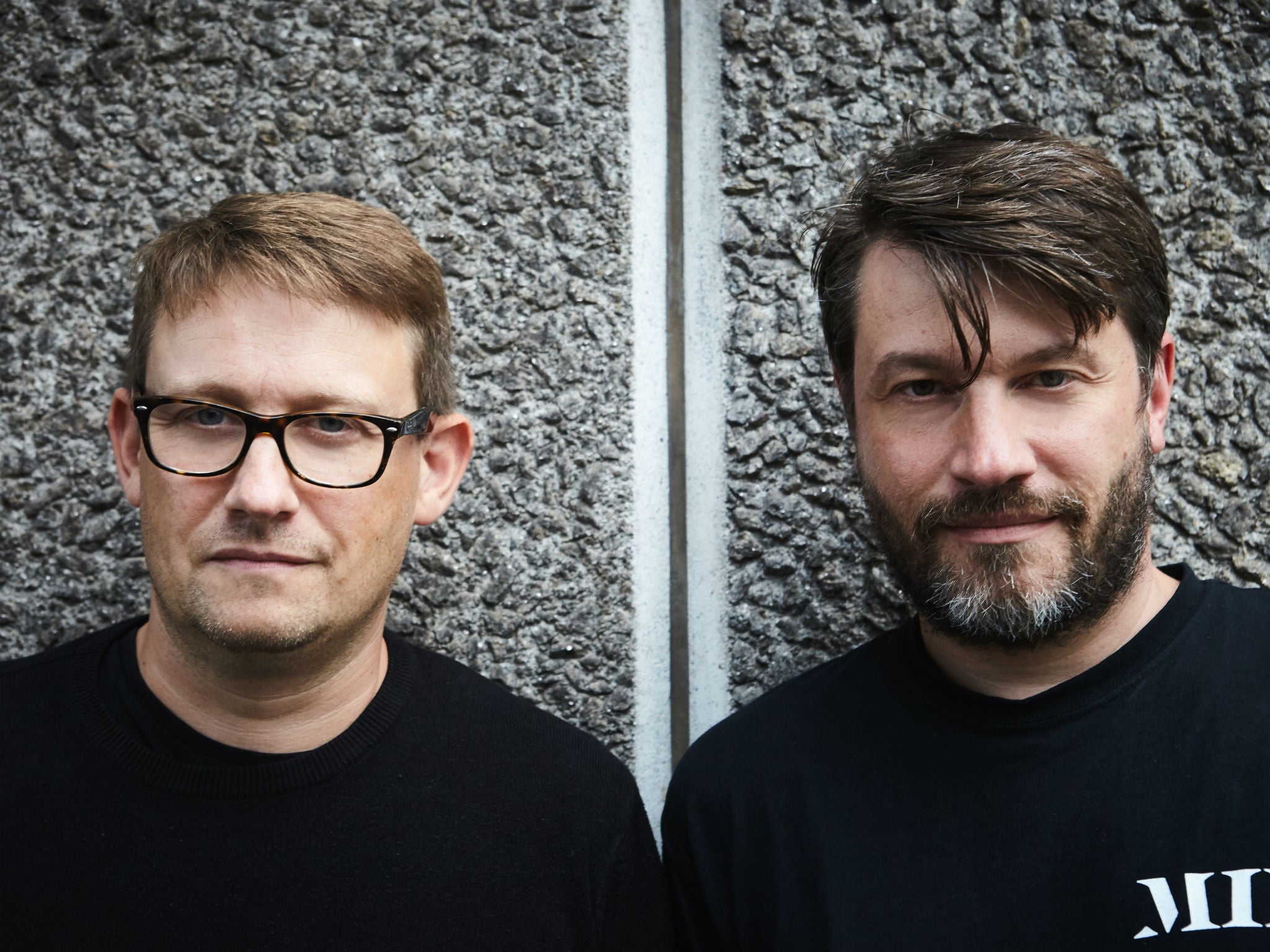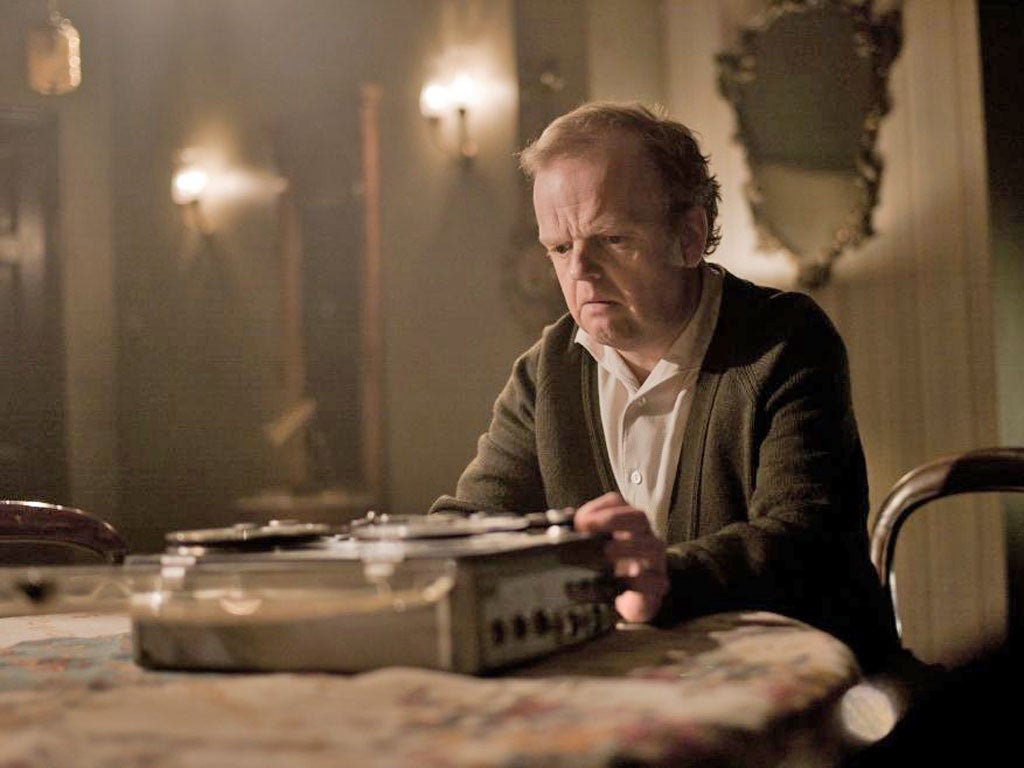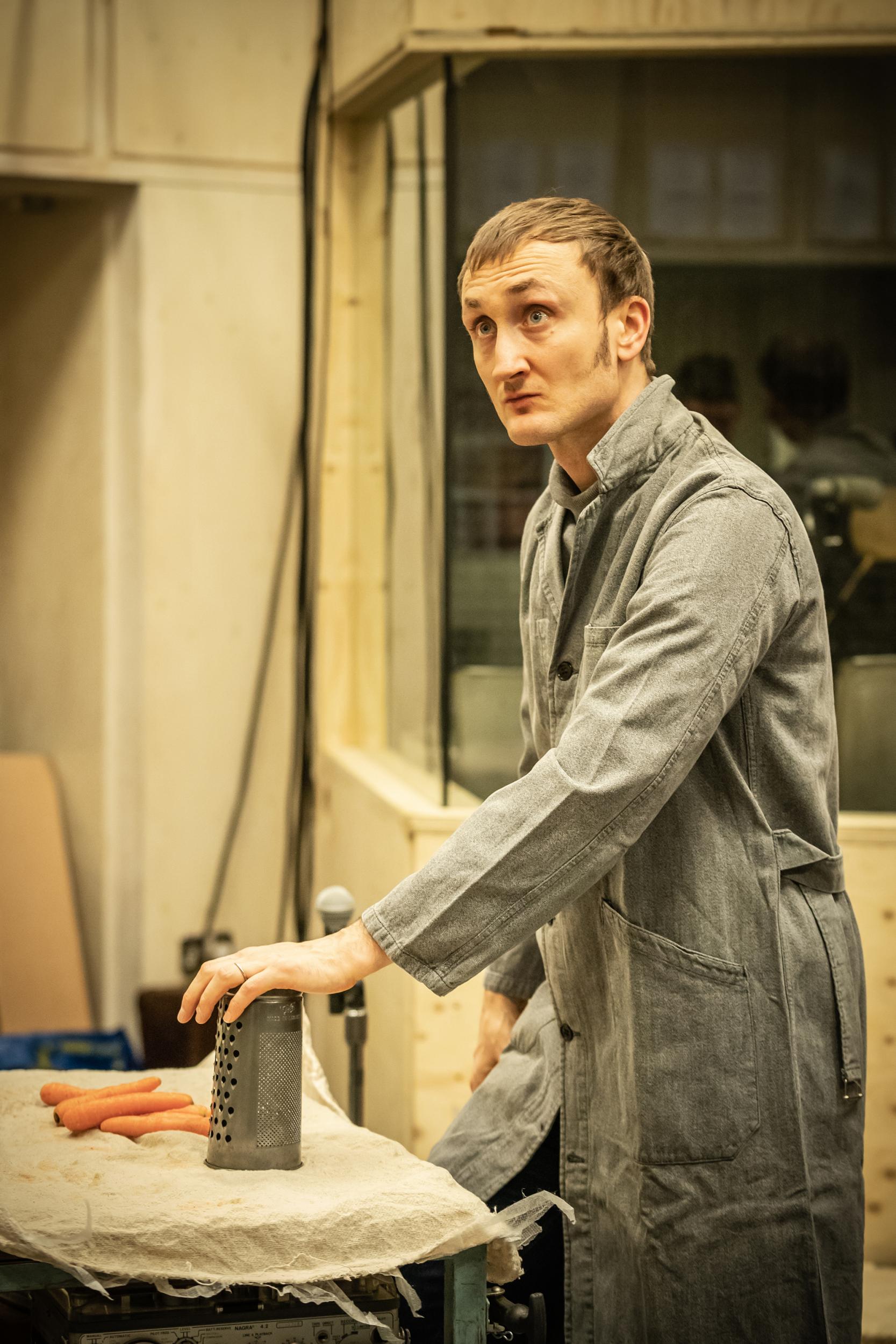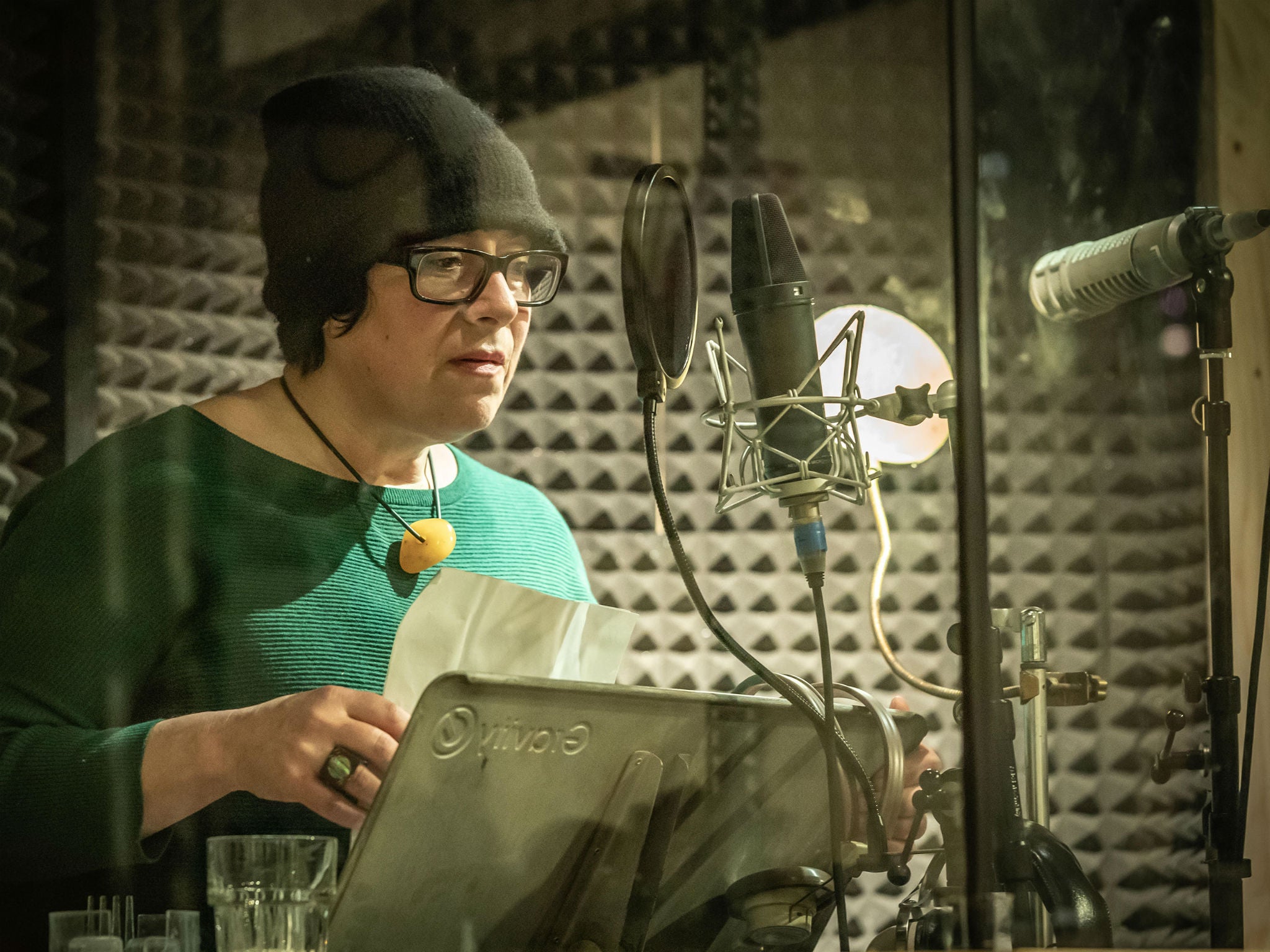
If you’ve been to the theatre in the past decade, you will have likely heard the work of Ben and Max Ringham. The brothers have been sound designers and composers on a lot of shows – including, recently, Machinal at the Almeida, a production of King Lear starring one Ian McKellen, and all of the short plays in the extensive Pinter at the Pinter season.
Their work is usually a bit different from a straightforward soundtrack, or generic samples drawn from a digital effects library, however: the pair have always enjoyed using found sounds that they then manipulate and distort, using them as the basis for their musical compositions, atmospheric soundscapes, or ominous effects. A recording of a particularly creaky lift in a branch of Sainsbury’s has become a staple, for instance: “That lift had a brilliant sound,” says Ben. “That lift has been in a lot of shows!”

So it’s no wonder that the pair can’t stop grinning when talking about their latest project: Berberian Sound Studio, at the Donmar Warehouse. It’s an adaptation of Peter Strickland’s cult 2012 movie, which starred Toby Jones as Gilderoy, a British sound engineer who ends up working on a gory giallo horror movie at an Italian film studio in the 1970s. It’s Gilderoy’s job to create the soundtrack, using Foley techniques: sound effects that are recorded post-production to aurally match the action on screen. These sounds are often faked approximations of the real action, however, with Foley artists providing noises that sounder richer, or more resonant. Or, in the case of a grisly horror movie, more legal: torture scenes must obviously be soundtracked without anyone actually having their toenails extracted...
Berberian Sound Studio brings the Foley process vividly to life. All manner of fruit and veg stands in for human flesh: watermelons are split, cabbages stabbed, radishes snapped. The hiss of oil in a frying pan becomes a red-hot poker shoved somewhere unmentionable. It soon takes its toll on Gilderoy, and the boundaries between the film and reality start to slip and slide.

Now, the screenplay been adapted for the stage by Joel Horwood. The play stars the brilliant Tom Brooke (recently seen as a crazed sniper in BBC’s Bodyguard) as Gilderoy and, intriguingly, it is the directorial debut of Tom Scutt, a theatre designer.
Generally, sound designers don’t get much recognition; the Ringham brothers seem surprised to even be interviewed. But really, who better to speak to for this show, which not only recognises their profession, and the incredibly evocative power of sound, but also dovetails perfectly with their own enthusiasms for found sounds and retro analogue gear?

They’ve always been into the music of giallo films, as well as nerding out more generally over library music of that era – stock tunes that filmmakers could use draw on for soundtracks. “There’s a sort of fetish around the sound of that, the analogue techniques of recording,” says Max. He’s the older brother, and a little sharper in his answers; Ben is the bearded one, and more buoyant and effusive.
The brothers have a lot of 1960s and 1970s analogue gear themselves, retro synthesisers and the sort of tape machines the fictional Gilderoy also twiddles with. “All of that stuff is a bit of a wet dream for us to be honest,” says Max.
The Ringhams are also working closely with a Foley designer, Tom Espiner, on the show. The three of them have been recording all sorts of textures and tones within the rehearsal room itself, so that the soundtrack for the show will spring from its own props and set.
“You get a quality off that, in the grit and the dirt of it, that really gives life to it in a way that just a string sample won’t,” says Max. It’s more interesting than simply cueing up pre-existing digital sounds: “There’s a plugin called Omnisphere that every sound designer seems to use; it’s really nice to use a toothbrush on a watering can instead!”
“We got some amazing tones out of that,” says Ben, smiling. “And there’s an old hand drill, a really squeaky one, I recorded that and pitched it down three octaves and put a huge amount of reverb on it and it sounds like a woman singing – it’s amazing. It’s really beautiful. We were trying to work out how to do a guillotine the other day, so we got a couple of filing cabinets out. And we recorded a whisk that we then pitched up massively, and now it sounds like the hiss you get on old films. ”
Of course, audiences won’t necessarily realise that the sounds they hear were made and recorded in the space. But, Max suggests, “those things seep in on a subliminal level”.
That, of course, is partly what’s remarkable about Strickland’s original film: it really harnesses sound’s power to disturb. We never see the horror movie Gilderoy works on yet by the end you feel like you have, the nervous system thoroughly shaken by endless blood-curdling screams, endless grisly effects. “Sound works on a more emotional level than some other forms of information,” agrees Max.
Berberian Sound Studio also lays out for viewers the gap between what we think we’re hearing when we watch a film, and the truth. The broken finger, and the snapped radish.

“You have these layers of reality: what something actually sounds like, what you imagine it sounds like, and then a sound effect that comes from archive – and you have no idea how that was created,” says Max.
And we’ve all also learnt to accept sound effects that are really implausible, or least unreally heightened. “When they developed those huge surround [sound] systems in the Seventies they had these overemphasised big bassy sub speakers, and that became something the sound designers played with,” continues Max. “So now a car door closing in the cinema sounds very different to reality – there’s this huge booming bottom end. We’ve all completed bought into that; we understand it.”
This was even the case on the original Berberian Sound Studio film itself. The sound effects we hear being made in the film – the grotesque squelch of the melons that Gilderoy records to stand in for a crushed skull, for example – were themselves Foley sounds, created for Strickland’s film out of other materials. The film’s Foley supervisor Heikki Kossi told Empirethat he used damp cloth and cracked a small piece of wood, as hitting a real melon “didn’t sound wet enough”.
But the Ringhams can’t do that that sort of fakery with a sound that’s being created live. After all, some of the audience in the tiny Donmar will be able to hear the actual, unmediated sound of a melon being split in front of them.
“We’re looking at how Foley could be used in close proximity to the audience, and playing with what’s real and what isn’t real,” says Ben. “They’re very real sounds that you see and hear – and they are small, like breaking a radish. So do we go ‘snap’, and then throw [a live recording of] the sound somewhere else? Do we put a delay on it, so you hear it three times? How much reverb do you put on it?”
Berberian Sound Studio is a story about a sound designer who goes mad working on disturbing material. So – let’s get down to it – do their jobs ever send them mad?
It can get a bit dark, they concede. “There are moments when you’re on your own, listening to something over and over again,” says Ben. “You go through all the emotions: the initial ‘oh that’s horrible’, then ‘well I’ve just got to get on with it’. It becomes a nonsensical sound, but once you’re aware you’re becoming desensitised to it, that’s where you start going a little bit mad...”
The social aspect of theatre helps, although Max recalls one commission that unsettled him long after they finished it. “We did a show at the National a few years ago called We Want You to Watch which was about aggressive rape porn. I found that really traumatic, really unpleasant.”
Their career in theatre itself is a happy accident, however. Although their father was an actor, the pair’s interest always lay in music – in the Nineties, they DJ-ed and made their own drum’n’bass and garage music; later, they released several albums of upbeat electro-pop under the name Superthriller, and toured with Beck. In fact, they’ve got another album ready to drop – just as soon as they have a break in the theatre schedule.
Ben explains that they “fell into theatre” thanks to their sister, Hannah Ringham, a member of the Shunt collective. They worked on shows with them throughout the noughties, and were part of Shunt’s late-night performance space in the arches under London Bridge, which blurred the boundaries between theatre, installation art, and a night out.
That unusual – and perhaps unusually fun – start to their theatrical career continues to influence them in the work they make and the projects they choose. “It was not only rolling around in the dirt under London Bridge station, but also it being a collective endeavour,” says Max. “There are times where we do ‘30-seconds-of-music-and-a-cat’s-meow’ kind of shows, but mostly we try to make sure we do something that is very much us.” And surely no show will be more Ben and Max than Berberian Sound Studio.
Berberian Sound Studio is at the Donmar Warehouse till 30 March







